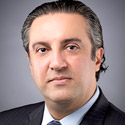01:05 PM
Mind the Gap Between Regulation & Innovation
High-frequency trading (HFT) -- placing a multitude of orders per second -- has garnered renewed attention since the release of Michael Lewis's latest book, Flash Boys. The controversy surrounds the ability of some market players to see and pre-empt large institutional orders and -- because of their technological proximity to the exchange -- and earn a profit as a result of their access and speed.
Front running, where a broker executes a trade before a client for personal gain, is banned by FINRA Rule 5270. This rule is a broader, more comprehensive ban than the one put in place by the NASD, yet it does not cover the practice of some high-frequency traders. One would think that an easy fix would be to extend that ban to HFT. So why all the noise over HFT?
High-frequency trading is just a term. It's the equivalent of calling a Ferrari a high-speed horseless buggy. However, in the discussion of HFT, it is often the speed (high) and/or the number of trades (frequency) that bears the blame, not the people who conduct them or design the computer programs that do so. In essence, many blame the technology. This is an old problem that began in literature decades ago, moved into the theaters, and is now an accepted axiom of our popular culture: Machine bad, man good.
[To read more about what people are saying about high-frequency trading and how it should or should not be further regulated, read: Reframing the HFT Debate.]
From Hal, the fictitious computer in 2001: A Space Odyssey, to Skynet, the computer system in the Terminator movies, popular culture has made it easy to blame technology. Moreover, machines, unlike in the movies, do not show up on CNBC to defend themselves. Vague terms like HFT give credence and weight to the criticism of technology. Therein lies the problem. HFT has been around long enough that anyone with even a shallow knowledge of the technology, as well as a basic understanding of the securities laws of the United States, can separate fact from fiction.
It is a fact that the US securities laws, though amended over time, were designed for a disclosure-based system that came into existence in an era with the technological equivalent of can-and-string communication. Furthermore, the rule-making process favors those with the knowledge and resources to respond with public comment and thus have a larger say in the process. This practice and its practitioners, though well intentioned, move forward slowly and narrowly. As a result, regulation often lags behind technological innovation. The budget and staff of the agencies responsible for regulating the markets pale in comparison to the vast sums invested in the technology infrastructure of the markets. This exacerbates the gap between regulation and technological innovation.
The financial services industry is built on a business model wherein one of the primary sources of revenue is intermediation. Oddly, technology has squeezed both the revenue and the margin available. Why is it a surprise that firms would seek a competitive advantage by attempting to gain a technological edge? If regulation is silent on the matter, then why is it surprising when certain actors enter the market with the intention of gain through regulatory arbitrage?
If the regulatory process -- by its nature and resources -- is slow, and technological innovation is fast, the ensuing gap will always exist. The solution is not to blame the technology, prohibit innovation, or press for more narrowly tailored regulation. Instead, there can be a set of principle-based rules that address the specific gap between regulation and innovation and prevent some from utilizing new technology to achieve an undesired outcome.
The problem with such a regulatory approach is that it does not blend well with our current system of rules and disclosures. In such a system, the actors rely on rules that are broad enough to achieve the narrowly tailored regulatory goals set before them. If the rules are too broad, they risk a backlash in the courts. If they are too narrow, they fail to achieve their intended outcome.
There is hope that the desire for bringing balance to the markets over the long term will outweigh the desire of the parties simply to fix the problem at hand. In the end, the controversial use of HFT is only the latest manifestation of the problem. The real problem has been, remains, and shall always be the gap between technological innovation and regulation. Without broad principle-based rules, that gap will continue to leave an opportunity for some actors to profit through their technological ingenuity, at the expense of the players without access to such technology in the market.
Behzad Gohari is a Managing Director at The Althing Group, an advisory firm helping clients navigate the capital markets. Over two decades, and through a dozen startups, he has acted as founder, investor, and strategic advisor, as well as utilizing his ... View Full Bio

















